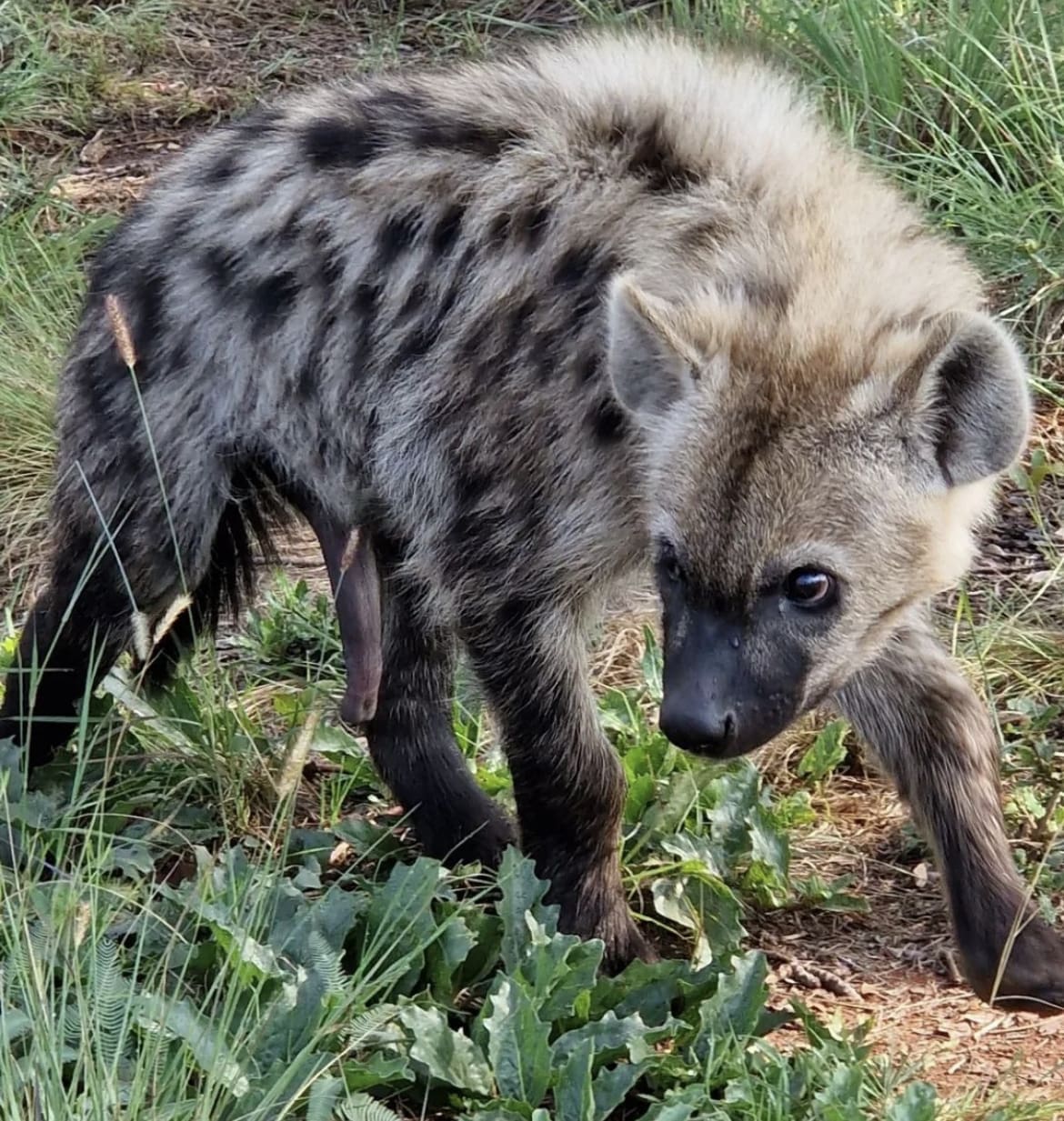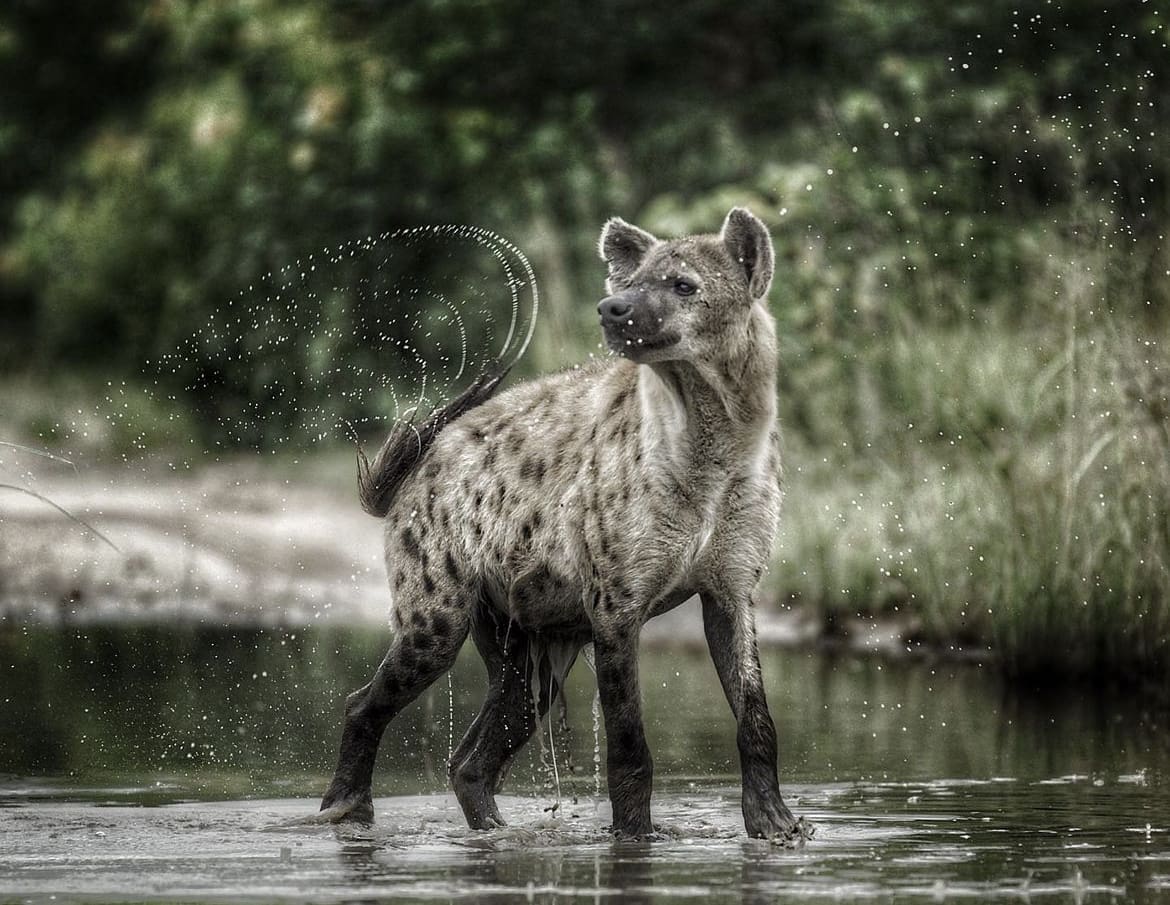[social_warfare]
The spotted hyena is a creature that’s as enigmatic as it is misunderstood. They challenge the very foundations of gender roles in nature.
While these animals often get a bad rap in movies and folklore, they harbor one of the most fascinating biological secrets of the animal kingdom: the female sports what appears to be a penis. Yes, you read that right—a pseudopenis! This article isn’t just a dive into one of nature’s oddities; it’s an exploration into the evolutionary marvels that drive the complex lives of these fierce creatures.
Why do female hyenas have this unusual organ? What does it mean for their survival and social standing in the wild? In the coming sections, we’ll unpack the anatomy of the pseudopenis, explore the theories behind its evolution, and see how it influences everything from mating to social dynamics.
Whether you’re a wildlife enthusiast, a curious biologist, or just someone who loves a good nature mystery, stick around. You’re about to discover why the female spotted hyena’s reproductive anatomy is a game-changer in our understanding of evolutionary biology. Let’s demystify the reasons behind the pseudopenis and delve into its implications on the social structure of these captivating animals.
What Exactly is a Pseudopenis?
To understand why female spotted hyenas are so unique, let’s first delve into what a pseudopenis actually is. Essentially, it’s an enlarged clitoris that closely resembles the male penis, both in appearance and function.
This organ is capable of erecting and is used by females not only for urination but also for mating and giving birth. Yes, the complexities of hyena birth through such a structure are as challenging as they sound, which naturally raises the question of why such an anatomy exists in the first place.
The pseudopenis is complete with a false scrotum, which is actually the female’s enlarged labia fused together. These features are not superficially male; they play an integral role in the female hyena’s life, from social interactions to the reproductive process.
The anatomical structure is such that it gives female hyenas a distinctly masculine appearance, blurring the lines of gender roles within the animal kingdom. This phenomenon is not only rare but unique to spotted hyenas, setting them apart in the world of mammals.

READ NEXT: THE 10 DEADLIEST ANIMALS IN AFRICA
The Evolution Behind the Masquerade
Why would evolution favor the development of such a peculiar trait as the pseudopenis in female spotted hyenas? Theories abound, but most revolve around the idea of survival and social advantage. One prevalent theory suggests that high levels of androgen (a type of male hormone) exposure in utero could be responsible. This hormonal influence not only develops the pseudopenis but also contributes to the aggressive nature of female hyenas, giving them a significant edge in their matriarchal societies.
This adaptation could be seen as nature’s way of leveling the playing field. In the harsh environments where hyenas thrive, every member of the clan needs to be tough and competitive to survive. The females, often larger and more dominant than males, control mating and make key decisions for their clans. Their masculinized anatomy might be nature’s strategy to ensure that female hyenas hold their own in this aggressive environment, handling both the roles of caregiver and leader effectively.
Moreover, the pseudopenis might serve as a natural deterrent against unwanted mating attempts. Only the most determined and fit males can navigate the complex mating process, which involves careful alignment and cooperation from the female. This ensures that only the strongest genes are passed down to offspring, a critical factor in the harsh reality of their ecosystem.

Reproduction and Mating
The mating rituals of spotted hyenas are as unconventional as their anatomy. To mate, a male hyena must be exceptionally patient and precise, as he has to navigate the female’s pseudopenis. This process is not only physically demanding but requires a high level of cooperation from the female, who must invert her pseudopenis to allow copulation—a feat that seems almost acrobatic in nature. This unique mating system naturally complicates reproduction, but it also plays a crucial role in the social structure of hyena clans.
Due to the complexity and difficulty of the mating process, mating opportunities are less frequent and more selective in spotted hyenas than in many other mammals. This selectivity strengthens the social bonds within clans and ensures that only the most adept males reproduce, thereby enhancing the genetic quality of offspring. The female’s control over mating further solidifies her dominant role within the clan, enhancing the matriarchal system that characterizes their social structure.
Additionally, the birth process through the pseudopenis presents significant challenges and risks. The birth canal of the pseudopenis is only slightly larger than the cubs she bears, often resulting in a laborious and dangerous delivery. This high-risk birthing process has profound implications for cub survival rates and the overall fitness of the species, influencing everything from individual health to population dynamics.
To lighten the mood in what might otherwise be a heavy read, it’s worth noting some humorous yet true myth-busting about hyenas: No, they don’t laugh because they find something funny. Their famous “laugh” is actually a form of communication used to express excitement and frustration, often during feeding or when a cub is in distress during the challenging birth process.
This fascinating blend of complex behaviors and biological adaptations makes the spotted hyena a creature as intriguing as it is formidable.

RELATED: THE TOP SAFARI DESTINATIONS IN SOUTHERN AFRICA:
Social Dynamics and Survival
The pseudopenis isn’t just a biological curiosity; it’s a cornerstone of the social structure in spotted hyena clans. In this matriarchal society, females reign supreme, and their unique anatomy enhances their status and control within the group. The presence of the pseudopenis symbolizes strength and dominance, traits that are crucial for leadership in the competitive savannah.
Female hyenas leverage their anatomical advantage to maintain order and establish their authority. This dominance is visible not only in day-to-day interactions but also in critical moments such as food distribution and conflict resolution. The females’ larger size, coupled with their aggressive demeanor (enhanced by higher androgen levels), allows them to monopolize food resources, which is vital for their survival and the nurturing of their cubs.
This dominance extends to reproductive choices as well. By controlling when and with whom they mate, female hyenas influence the genetic direction of their clan, ensuring the continuation of traits that reinforce their matriarchal system. This control over mating and the inherent selection pressure it creates shapes the evolutionary path of their species.
To put this in perspective, consider other matriarchal animal species, like elephants or orcas, where females also lead social groups and make critical decisions that affect the survival of their family units. However, unlike hyenas, their dominance does not stem from such pronounced physical masculinization but from social and intellectual prowess. This comparison not only highlights the uniqueness of the hyena’s social structure but also underscores the diversity of matriarchal systems in the animal kingdom.
In the wild world of spotted hyenas, it’s not just about being the strongest; it’s about being the smartest and most adaptable. Their society challenges our human notions of gender and hierarchy, offering a fresh lens through which to view both animal behavior and evolutionary biology.

Hyenas in the Wild vs. Human Perception
From Lion King to Kingpin
The portrayal of hyenas in popular media, like the sneaky and villainous trio in Disney’s The Lion King, starkly contrasts with the complex and nuanced reality of these creatures. This section will dive into how spotted hyenas are viewed in the wild versus how they are often misrepresented in human culture.
In the wild, hyenas are not the cowardly scavengers as frequently depicted; rather, they are skilled hunters with a success rate that rivals that of lions. About 95% of their diet comes from their own hunting efforts, showcasing their prowess as top predators rather than mere opportunists. This misalignment between perception and reality extends beyond just their role in the ecosystem—it affects conservation efforts and our understanding of their true nature.
The spotted hyena’s intelligence is another aspect that is often overlooked. They possess complex communication skills and demonstrate problem-solving abilities that are comparable to some primates. Their social interactions are intricate, with a clear structure and hierarchy that ensures group survival. This intelligence, however, is rarely highlighted in the tales told about them.
To further debunk myths and shift narratives, it’s important to recommend resources that offer a more accurate depiction of hyenas. Documentaries, scientific publications, and wildlife blogs can provide insights into the real lives of these fascinating animals, promoting a better understanding and appreciation.
Conservation and Future Research
The unique reproductive anatomy and complex social structure of the spotted hyena are not just fascinating biological phenomena—they also underscore the importance of conservation efforts for this often-misunderstood species. As we delve into the needs for protecting these remarkable creatures, it becomes evident that conservation is not just about preserving an animal; it’s about maintaining the ecological balance they help uphold.
Spotted hyenas play a crucial role in their ecosystems as both predators and scavengers, helping control prey populations and clean up carcasses that could spread disease. However, they face threats from habitat loss, human-wildlife conflict, and misconceptions that lead to negative attitudes and policies. Conservation efforts need to focus on habitat preservation, conflict mitigation strategies, and education programs that shift public perception and increase ecological awareness.
Future research into hyena biology and behavior can also provide insights that enhance our conservation strategies. Understanding how hyenas adapt to changing environments, how their social structures evolve with shifts in their ecosystems, and the potential effects of climate change on their survival can inform more effective conservation practices. Additionally, studying their unique reproductive system may offer broader biological insights that could have implications for other species and even human medicine.
In closing, the conservation of spotted hyenas is a compelling chapter in the broader narrative of wildlife protection. By safeguarding these animals, we not only preserve an essential link in the African savannah but also protect a living library of evolutionary innovation and resilience. Encouraging reader engagement through support for wildlife conservation initiatives or participation in community-based protection programs can make a tangible difference in the lives of these fascinating animals and the health of our planet.
This article aims not only to educate but also to inspire action, fostering a connection between our readers and the wild world of the spotted hyena. Through understanding, respect, and proactive involvement, we can ensure that future generations will also be able to witness the incredible survival story of the spotted hyenas.
